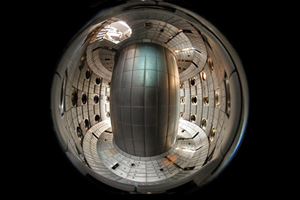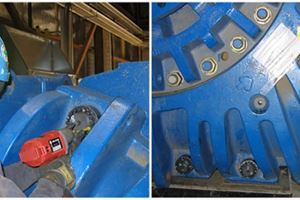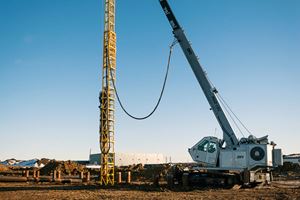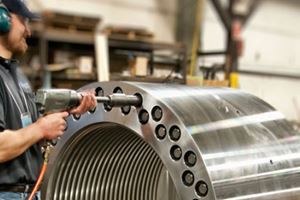Looking deep into the stars
The Large Binocular Telescope (LBT) on Mount Graham in Arizona, USA, is already one of the world’s most advanced optical telescopes. It consists of two 8.4-meter primary mirrors on a common mount structure. The LINC-NIRVANA near-infrared imaging instrument will combine the light from the two mirrors and provide a resolution comparable to a telescope that has a diameter of 23 meters.
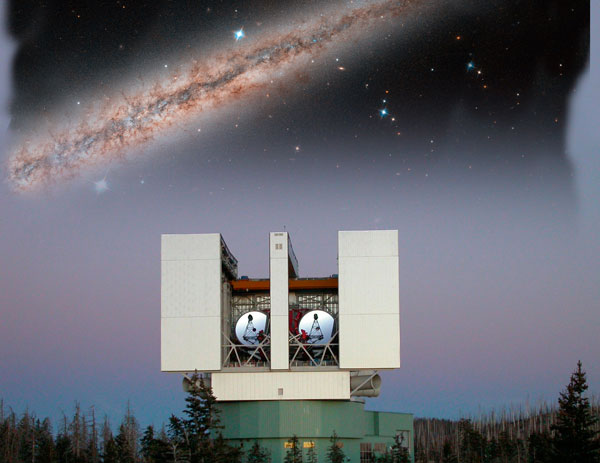 Put another way, the LINC-NIRVANA instrument is like a camera app on your smartphone that would allow you to take pictures of the centre of a galaxy 53.5 million light-years away. But also an app that weighs 9.5 tons, has 139 motors, and took a team of international engineers ten years to build.
Put another way, the LINC-NIRVANA instrument is like a camera app on your smartphone that would allow you to take pictures of the centre of a galaxy 53.5 million light-years away. But also an app that weighs 9.5 tons, has 139 motors, and took a team of international engineers ten years to build.
Involved in the complex LINC-NIRVANA project since the start, Ralf-Rainer Rohloff is an engineer and the head of the Mechanical Design Office of the Max Planck Institute for Astronomy in Heidelberg, Germany. He says that there are currently about 40 engineers from many different fields working on the project, as well as several astronomers.
“When planning the instrument, the astronomers attended meetings between the scientists and engineers where we discussed what is possible,” Rohloff says. “These astronomers needed to have a bit of a technical background, so they understood what we said, and on our side we needed a little bit of an astronomical background to understand what they wanted.”
The instrument will serve a number of functions, including imaging planets outside our solar system and studying the most distant galaxies in the universe. Given the size and cost of the LINC-NIRVANA project, several institutes from around the world have been involved in its development. Rohloff’s institute is responsible for coordinating the work of the German institutes working on the instrument, in cooperation with institutes in Italy and in the USA.
The instrument was completed in June 2015, then carefully packed during the summer and shipped from Germany to Arizona in September. Rohloff and the team visited Arizona in November to conduct a number of tests on the instrument on site.
“It was very exciting because we had no real problems and everything fit,” Rohloff says. “With such a long design and development process, we were all happy that it went very smoothly. The final installation will take place in 2016.”
When mounting an instrument that weighs 9.5 tons to an extremely sensitive telescope, precision and stability are essential. Nord-Lock Superbolt tensioners and wedge-locking washers were selected to mount the frame of the instrument to the frame of the telescope and play a key role.
“We chose Nord-Lock Superbolts and wedge-locking washers because they are the most secure,” Rohloff says. “When we were looking for washers, we learned that 70 percent of them are not really safe. In our case, the instrument must be completely secure – even slippage of a few hundred microns would be unacceptable.”
Nord-Lock products were also chosen because of the very precise clamp load needs to be achieved in the bolts in a very limited space.
“There is no room around the instrument for large wrenches,” he says. “With the Nord-Lock Superbolt solution, we can apply the exact torque needed using a small torque wrench, which is a big advantage.”
Now that this decade-long project is almost complete, Rohloff says he has plenty of other projects to keep him busy. His work often takes him to the remote, arid locations that make the best sites for telescopes, from the deserts of Spain to the mountaintops of Chile. He says that he has had a lifelong passion for astronomy.
“In my childhood I was already very interested in astronomy,” he says. “I even built my own small telescope then. It’s amazing to me now that I am helping build one of the largest telescopes in the world.”
LINC-NIRVANA
The LINC-NIRVANA near-infrared imaging instrument will use the full binocular capability of the LBT. The instrument allows the coherent superposition of light from the twin 8.4-metres LBT single-eye telescopes on a single science detector, providing a resolution comparable to a telescope that has a 23-metre diameter.
Measuring approximately 5 x 4 x 4.5 metres, the LINC-NIRVANA weighs 9.5 tonnes and has 139 motors. Given the extraordinary requirements of such as system, it is absolutely crucial that the instrument and its optical bench maintain their 3-dimensional spatial position, leaving no margin for error regarding the components used.
In a galaxy far, far away
The new astronomical instrument for the Large Binocular Telescope (LBT) will enable astronomers to see planets and galaxies extremely far away. One galaxy that astronomers may study is the giant elliptical galaxy Messier 87 (M87), also known as Virgo A or NGC 4486. It was discovered by the French astronomer Charles Messier in 1781 and has been popular with astronomers ever since.
M87 is part of the Virgo Cluster, located 53.5 million light-years away from Earth. The galaxy contains an exceptionally large population of so-called globular clusters, approximately 12,000 compared to 150 to 200 in the Milky Way.
In particular, the LBT telescope would investigate the nucleus of this galaxy, which has shooting out of it a jet of high-energetic plasma, which travels at relativistic speed, and is close to 5,000 light-years long. The plasma is being ejected from a supermassive black hole at the centre of the galaxy.
In the image above, cold matter from the Virgo Cluster falls towards the core of M87. Met by the relativistic jet it produces shock waves in the galaxy’s interstellar medium.
Source: Wikipedia
The perfect spot
To reach optimum results modern telescopes need a special environment. The requirements for ground-based observatories include many clear nights per year as well as minimal light pollution from urban areas and low water vapour content in the atmosphere. That is why these telescopes are located in dry regions at high altitudes, such as USA’s southwest. LBT is located at an altitude of 3.221 meters on Mount Graham, Arizona.
The Nord-Lock solution
Customer: Max Planck Institute for Astronomy in Heidelberg, Germany.
End-Customer: Large Binocular Telescope (LBT).
Location: Mount Graham, Arizona, USA.
Application: Mounting an astronomical instrument to the telescope frame.
Nord-Lock solution: 30 Superbolt CY-M20 tensioners and wedge-locking washers.
Product Benefits: Absolute stability with zero slippage. Able to apply the exact torque needed in a small space.
